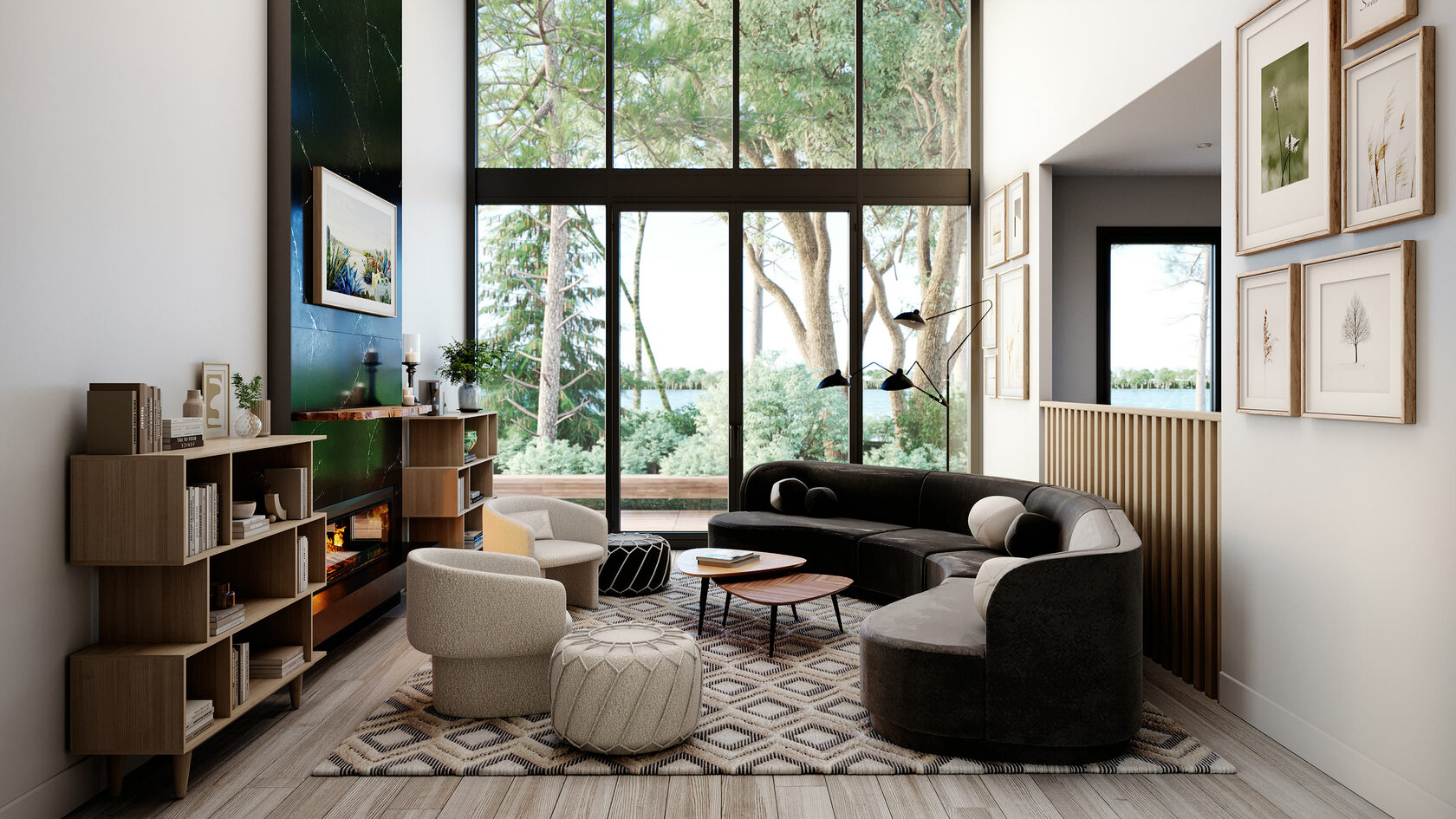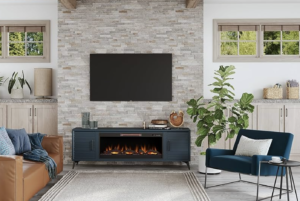
Bringing an interior design concept to life can only be easy with the right tools. How will various furniture pieces work together in a space? Will the fabrics and finishes you’ve selected complement each other or clash? Visualizing design ideas is frustrating and leaves too much room for error.
However, CGI (computer-generated imagery) solves this major pain point in the design phase. With CGI, you can create strikingly realistic 3D renderings of interiors that accurately depict how various elements will look together, as well as considering key structural measurements by integrating tools such as truss calculators and other engineering integrations into the workflow.
Interior designers or furniture manufacturers don’t have to guess how different furniture arrangements, wall colors, and flooring options will look – you can see it with CGI. And that’s just one of the ways CGI streamlines the design phase for interiors and furniture. This article will highlight key ways CGI can be leveraged in the design process to help you build your dream home.
#1 Visualize the Space in 3D
One of the most valuable applications of CGI for interior design is the ability to visualize spaces in strikingly realistic 3D. Visualization is the process of creating a mental image of how your design will look in real life.
As a designer focused on furniture and home living spaces, you may have to rely on sketches, drawings, or mood boards to convey your design ideas. These methods may need to be more accurate, realistic, or detailed enough to capture the essence of your design. This is where partnering with a quality 3D Render Studio pays dividends.
Advanced CGI software allows you to upload floor plans and create photorealistic 3D renderings of interiors. To experiment digitally, you can adjust colors, materials, lighting, furnishings, and more. Now, you can actually see how your design ideas would look in reality instead of just imagining it. This takes the guesswork out of the design process.
In addition, high-quality 3D renderings allow you to see how furniture arrangements fit and function and whether design elements harmonize or clash. Rather than costly physical mockups, CGI empowers you to test concepts digitally with a 3D render agency until you achieve your dream home vision.
#2 Identify Potential Problems with the Design
One of the biggest headaches as an interior designer is realizing a flaw in the design plan after physical construction has already begun. The furniture proportions may not work as expected for the space. Or the material chosen for the floors clashes with other elements once installed. Not only can these issues result in a design you’re unhappy with, but fixing them after the fact is extremely costly.
CGI’s innovative 3D visualization capabilities allow you to identify these problems while still in the digital concept phase. Walkthrough renderings from different angles help you spot spatial constraints or ergonomic issues that may have been overlooked in a 2D floor plan. Materials and lighting can be evaluated together to pinpoint potential clashes. You can even assess functional factors like walkways and seating arrangements.
Using CGI to identify potential issues with your design can help you avoid costly mistakes and errors that may occur in the production or installation phase. You can save time, money, and resources by fixing or improving your design before manufacturing or delivering it.

Photographer: Mo Eid
#3 Present Your Ideas Clearly
One of the biggest obstacles designers face is communicating abstract visions in a way that allows clients and team members to truly understand and buy into the proposed design. But CGI gives you the power to digitally bring conceptual ideas to life in a way that resonates.
Show Don’t Tell
With CGI, you can create immersive 3D renderings and VR walkthroughs of spaces to allow clients to visualize and experience your design firsthand. Instead of relying on verbal descriptions, you can show clients exactly what the space will look and feel like. This makes it easier to convey your vision and win approval.
Increase Clarity
Even the most detailed sketches and floor plans lack the clarity of a 3D CGI visualization. CGI provides a realistic representation of how all the colors, materials, proportions, and elements will harmonize in the physical space. This removes uncertainty and confusion for stakeholders.
Expedite Approvals
When clients can see an accurate depiction of the proposed design, it instills confidence that you understand and can deliver their dream home vision. This makes them more excited about the project and expedites the approval process so you can move forward quickly.
Rather than hoping your ideas come across, CGI allows you to easily showcase visuals that speak for themselves. This empowers home and interior designers to sell their vision and accelerate the design phase.
#4 Streamline Collaboration With Others
Interior design involves blending creativity with practical functionality. Close collaboration between designers, architects, engineers, and contractors is crucial to accomplish this. CGI provides a shared platform for project stakeholders to get on the same page.
With CGI, detailed 3D renderings can be accessed and marked up by all parties in real-time. This fosters alignment on design intent and project scope. Engineers can evaluate infrastructure feasibility early and ensure harmony between creative vision and spatial realities.
Contractors can provide constructability feedback and advice on finishes, materials, and fabrication. With all collaborators contributing through an interactive CGI model, miscommunication is prevented. This seamless merging of imagination and implementation during the design phase results in a final product that perfectly matches the dream home envisioned.
#5 Promote Your Designs
CGI allows you to generate striking marketing materials to promote your furniture and interior design services. This can be a valuable tool for designers and manufacturers in the furniture, home & living industry, as it can help them to attract new customers and increase brand awareness.
Here are some specific examples of how CGI can be used to create marketing materials:
Product Catalogs
Render photorealistic CGI images of your furniture collections and feature them in digital or print catalogs. For example, a kitchen cabinet manufacturer could showcase their various door styles and finishes in a catalog created with CGI.
Lookbooks
Designers can create CGI lookbooks featuring various room vignettes staged with your products to inspire customers. An interior designer could use CGI to create a lookbook of living room options incorporating furniture companies’ sofas.
Website Assets
Use CGI renderings of products or environments on your website to catch the eye of site visitors. A designer of luxury bath furnishings could have CGI models of their products featured on their website.
Social Media
Develop unique CGI content to share natively on social channels or use for paid ads. For instance, a high-end rug company could create a CGI photoshoot of their products for Instagram.
With CGI, you can produce unlimited high-converting marketing materials to promote your business to prospective clients and home-furnishing customers. The realistic quality of CGI makes it a versatile tool for any furniture or interior design business.
Conclusion
Beyond aiding visualization, CGI empowers designers to transform imagination into reality. By enabling you to see, refine, collaborate, and promote like never before, CGI liberates you to manifest the home environments of your dreams with minimized risk and maximized rewards. Harness its full potential, and your only limit is your creativity.




